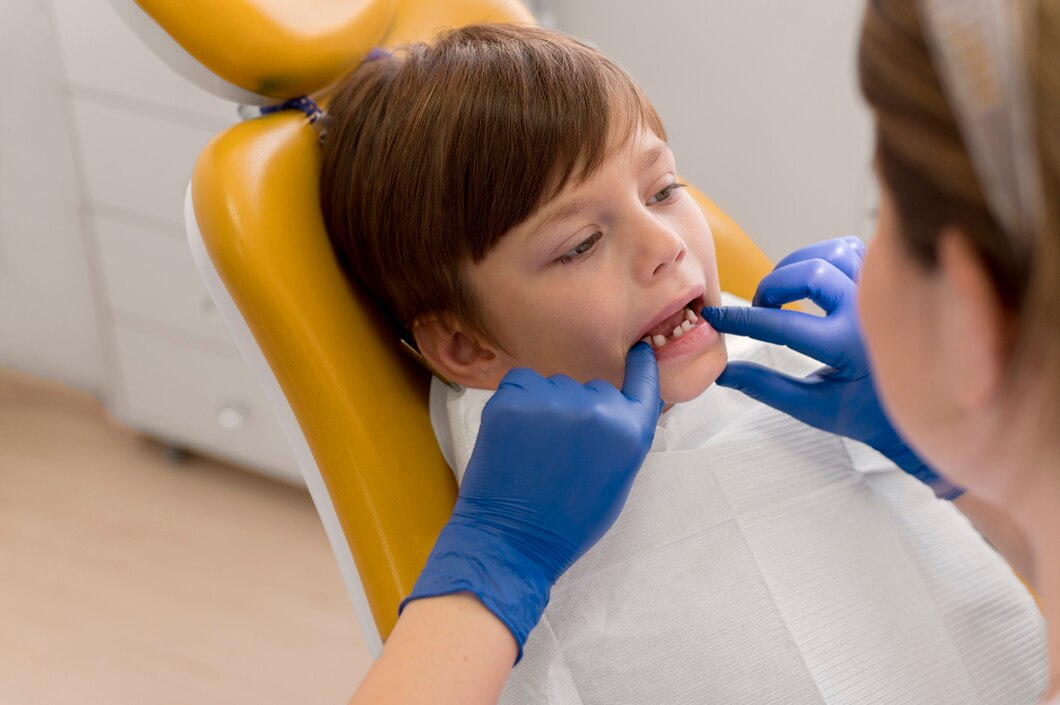Malocclusion refers to the misalignment of teeth and jaws, which can affect a child’s oral function, appearance, and overall dental health. Orthodontic treatment plays a vital role in correcting malocclusion, ensuring proper tooth development, and supporting overall oral health. This article discusses effective orthodontic techniques to address malocclusion in children.
Understanding Malocclusion
Malocclusion can result from various factors, including genetics, harmful habits (such as thumb sucking), and imbalanced jaw growth. Common types of malocclusion in children include:
- Crowded teeth: Teeth lack enough space to grow, leading to overlapping.
- Overjet: The upper front teeth protrude significantly over the lower front teeth.
- Underjet: The lower front teeth extend beyond the upper front teeth.
- Crossbite: Some upper teeth sit inside the lower teeth when biting.
Orthodontic Techniques to Treat Malocclusion
a. Braces
Braces are one of the most commonly used orthodontic techniques to correct malocclusion. They consist of metal or other materials attached to the teeth and connected by wires. Braces can:
- Move teeth to better positions.
- Adjust the relationship between the upper and lower teeth.
- Promote better jawbone growth.
b. Clear Aligners
Clear aligners, such as Invisalign, are a modern alternative to traditional braces. This system works by using a series of removable, custom-made trays to gradually move teeth. The benefits of aligners include:
- Aesthetic appeal: Less visible than traditional braces.
- Comfort: No wires that may cause mouth irritation.
- Removability: Easier cleaning and eating.
c. Functional Orthodontic Appliances
These appliances are designed to influence jaw growth and improve tooth positioning. Some examples include:
- Headgear: Helps correct upper jaw position and facial development.
- Bite Plates: Assist in guiding tooth and jaw growth.
d. Palatal Expanders
A palatal expander is used to widen the roof of the mouth. This tool is highly effective in addressing crowded teeth issues and creating more space for permanent teeth to grow.
e. Retainers
After orthodontic treatment with braces or other devices, retainers are used to maintain teeth in their correct positions. Retainers gradually help stabilize teeth after initial movement.
Key Considerations in Choosing Orthodontic Techniques
Selecting the right orthodontic technique for a child requires careful consideration. Important factors include:
- Child’s age: Tooth and jawbone development determine the appropriate treatment.
- Type of malocclusion: Different types of malocclusion may require different approaches.
- Child’s comfort and preference: Discussing with the child ensures they feel comfortable during the treatment process.
***
Malocclusion in children is a common issue that can be addressed with the right orthodontic techniques. With various options such as braces, clear aligners, and functional appliances, it is important to consult an orthodontist to determine the best treatment for each child's condition. Proper treatment not only enhances smile aesthetics but also improves oral health and overall quality of life. This effort aligns with Sustainable Development Goals (SDGs) Goal 3: Good Health and Well-being, Goal 4: Quality Education, and Goal 10: Reduced Inequalities.
Author: Rizky B. Hendrawan | Photo: Freepik



